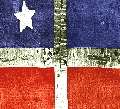| ATRÁS / BACK | SALIDA / EXIT | |||||
|
[ the history of puerto rico ] [ our flag ] [ our shield ] |
||||||
The "Grito de Lares" is Puerto Rico's first and only cry for Independence. On September 23, 1868 between 600 to 1000 men, mostly Puerto Rican born and from the west of the Island, revolted for Independence from Spain. Of the arrested most were innocent jíbaros their only guilt was being passive victims of the political regime. The citizens of the Capital as well as the wealthy were indifferent to the independence movement. The men were poorly armed without aid, protection or training. The revolt which was planned for September 29th began instead on the 23rd as a result of betrayal.
On the evening of the 23rd the most daring met at the farm of Manuel Rojas in Pezuelas, Lares. Led by Manuel Rojas this group of men marched towards Lares. Second in command was Matías Brugman, other leaders were Joaquín Parrilla, Eusebio Ibarra, Manuel Cebollero, Juan Terreforte, Andrés Pol y Gambino Plumey. This group was able to "take" Lares without any resistance before the Spaniards became aware if the revolt. The group proceeded to form a provisional government declaring an independent Puerto Rico Republic. The new President was Francisco Ramírez, Aurelio Méndez was the Government Minister, Clemente Millán was the Justice Minister, Federico Valencia was the Minister of the Treasury, Manuel Ramírez was the Secretary of State, Bernabé Pol was the Secretary. The following day they marched to San Sebastián where the Spanish militia awaited them and the rest is history.
Within 24 hours the revolt, which was twelve years in the planning, was defeated by the Spanish government. Of the participants 20 escaped, 8 died in action, 7 were tried by the War Council. Four months later Spain declared a general amnesty. No one was executed or kept in jail over 4 months. However 80 died in jail from yellow fever. The majority of the insurgents were Puerto Ricans and represented diverse socio-economic and racial levels. Of the 551 that were ultimately charged, 93% were born in west Puerto Rico and only 17 in the northeast. Mayagüez and Pepino produced one third of the suspects. 27 towns contributed men with only 10 town supplying 85% of the insurgents. Only 7% were foreign born. Dr. Betances was allowed to go to France in exile.
The reasons for the defeat were: the betrayal of the plan; Betances' inability to arrive with the weapons or ammunitions; and the fact that the general citizenry was lukewarm to the movement.
The insurrection had several leaders the most prominent being; Ramón Emeterio Betances (1827-1898), leading the movement from exile in Santo Domingo and Segundo Ruiz Belvis (1829-1867) co-leader with Betances. Ana María (Mariana) Bracetti Cuevas (1825-1903), wife of one of the members of the insurrection, sewed the revolutionary flag designed by Betances. The reason for the insurrection were: POVERTY, SLAVERY, taxation, lack of opportunity, and military rule.
The revolt was not a total loss. Shortly after the revolt Spain gave the Island many liberal reforms. It extended to Puerto Rico some of the liberal constitution that it had allowed during the war in Spanish America. Puerto Rico received provincial status and Spanish Citizenship was granted to the criollos. Some political reforms granted were allowing Boricuas to participate in special elections and to organize themselves into officially recognized political parties. Abolition of slavery began slowly in 1869 and was completed in 1873 giving freedom to some thirty two thousand slaves. (In 1827 there were approximately four times the number of free Africans in Puerto Rico than slaves. Partly due to the creole's distaste for slavery, often freeing their own slaves.) The libreta system was also canceled during the same year. Some of these concessions were canceled or changed later on but nevertheless the insurrection was fruitful and resulted in an improved lifestyle for the Puerto Ricans.
El Grito de Lares is now immortalized. In 1969 Governor Luis A. Ferré, a statehood supporter, declared September 23rd a National Holiday. Lares was declared a Historic Site by the Institute of Puerto Rican Culture. Lares is known as the birthplace of Puerto Rican Nationalism.
|
||||||
| SALIDA / EXIT | |
|
[
hogar
] [
información
] [
busqueda
] [
comentarios
]
[
creditos
] [ propaganda ] [
dile
a un amigo ] [ enlace a nuestro sitio ]
Propiedad Literaria © 1998 - 2025. Todos los
derechos son reservados. |
|
